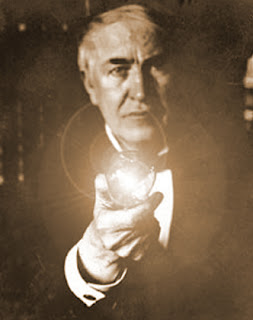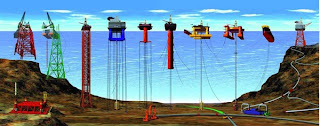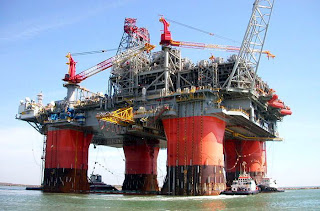"If I have seen further than others, it is by standing upon the shoulders of giants." - Isaac Newton
Why learn the history? New innovations stand on the shoulders of those who have gone before.
The speed at which things now change indicate the urgency of understanding the process of innovation.
Just for fun:
We live in the information age.
Change is expected.
New generations do not do things the way older generations did.
Now:
Make a house frame in a single day
Then:
200 years to build a church.
40 Maps That Will Help You Make Sense of the World
We live in the information age.
Change is expected.
New generations do not do things the way older generations did.
Now:
Make a house frame in a single day
Then:
200 years to build a church.
Discussion question:
Why were there so few innovations in the early years?
We have progressed more in the last 200 years, than in the previous 5,000+ years....
For thousands of years, people farmed with crude manual labor, lived their whole life within a small radius, battles were fought with spears and arrows - technology was stagnant for thousands of years...
- Communication & Transportation.
We have progressed more in the last 200 years, than in the previous 5,000+ years....
For thousands of years, people farmed with crude manual labor, lived their whole life within a small radius, battles were fought with spears and arrows - technology was stagnant for thousands of years...
- Communication & Transportation.
 No printing press, no internet, no phones, everyone had to reinvent the wheel for themselves because they could not learn from anyone except the people living in the same village as them.
No printing press, no internet, no phones, everyone had to reinvent the wheel for themselves because they could not learn from anyone except the people living in the same village as them.Moral of the story?
We're going to be writing, presenting, and learning how to share information in class because information is key to engineering.
Prehistoric Culture:
- No math or science
- No written language
- Limited verbal language
- Limited means of transportation
- They didn't go to school
- Spent most of life as hunter / gatherer
- Built using trial and error
- Used intuition
- Craftsmen
Lesson of Prehistoric Man: You can make things without understanding the science behind why it works.... but the more you understand, the better your product will be.
 Discussion Question:
Discussion Question:
Are we better off?
Archimedes refused to release information that could be used to make more effective weapons; he knew it would be used for evil... only when his home city was no longer able to hold off Roman attacks did he release his inventions to the military.
- No math or science
- No written language
- Limited verbal language
- Limited means of transportation
- They didn't go to school
- Spent most of life as hunter / gatherer
- Built using trial and error
- Used intuition
- Craftsmen
Lesson of Prehistoric Man: You can make things without understanding the science behind why it works.... but the more you understand, the better your product will be.
 Discussion Question:
Discussion Question:Are we better off?
Archimedes refused to release information that could be used to make more effective weapons; he knew it would be used for evil... only when his home city was no longer able to hold off Roman attacks did he release his inventions to the military.
1.3 Earliest Days
- improved ways to hunt and fish
- methods for providing shelter
- Weapons for power struggles
- religious observances
Everyday life was an engineering project.
Every person was an engineer
Egypt and Mesopotamia
The dawn of specialization.
- Toolmakers concentrated on making tools, Farmers concentrated on their farm, hunters concentrated on hunting. Working cooperatively in larger communities allowed everyone to attain greater skills in areas of specialization.
4000-2000 BC
- copper and bronze tools
- stone tools
- development of the plow
- wheel, sailing boat, methods of writing
Pyramids 2700-2500 B.C.
The great Pyramid
- largest masonry structure ever built
- 756 feet per side, 480 feet tall - dimensions indicate they understood 3.14159
- 2.3 million stone blocks, each weighing between 2.5 tons (5000 pounds) to 20 tons (40000 pounds)
 - 58,000,000 tons total.
- 58,000,000 tons total.
To build it, had to- transport large stones long distances
- aligned almost perfectly North South
- create an almost perfect square (only a few inches off)
- symmetrical, precise angles
- Ingeniously design internal chambers that would not cave in under the immense weight of the rocks above it through use of relieving chambers above rooms.
- Precision achieved despite being built on irregular rocky knoll.
- Has survived earthquakes, climate changes, etc. still standing after thousands of years.
- the only one of the 7 wonders of the world still standing.
1.4 Ancient Engineering
Parthenon in Athens : 447-438 B.C.House 40' tall Athena statue Ratios and dimensions indicate an understanding of math.
Roman Aqueduct:
Roman Roads
- 4-6" bed of sand
- large flat stones
- clay cement
- retaining walls
- concrete
- Gravel
- roads were 2 to 5 feet thick
- Romans understood the importance of transportation - roads bound their empire together.
- roads encouraged the free exchange of ideas, joined otherwise isolated communities.
The Great Wall of China: 220 B.C.
Purpose - military - repel Mongolians, protect commerce.
3,080 miles long
Metallurgical and Materials Engineering:

Stone Age -
ended between 4500 BC and 2000 BC with the advent of metalworking.
The dawn of specialization.
- Toolmakers concentrated on making tools, Farmers concentrated on their farm, hunters concentrated on hunting. Working cooperatively in larger communities allowed everyone to attain greater skills in areas of specialization.
4000-2000 BC
- copper and bronze tools
- stone tools
- development of the plow
- wheel, sailing boat, methods of writing
Pyramids 2700-2500 B.C.
The great Pyramid
- largest masonry structure ever built
- 756 feet per side, 480 feet tall - dimensions indicate they understood 3.14159
- 2.3 million stone blocks, each weighing between 2.5 tons (5000 pounds) to 20 tons (40000 pounds)
 - 58,000,000 tons total.
- 58,000,000 tons total.To build it, had to- transport large stones long distances
- aligned almost perfectly North South
- create an almost perfect square (only a few inches off)
- symmetrical, precise angles
- Ingeniously design internal chambers that would not cave in under the immense weight of the rocks above it through use of relieving chambers above rooms.
- Precision achieved despite being built on irregular rocky knoll.
- Has survived earthquakes, climate changes, etc. still standing after thousands of years.
- the only one of the 7 wonders of the world still standing.
1.4 Ancient Engineering
Parthenon in Athens : 447-438 B.C.House 40' tall Athena statue Ratios and dimensions indicate an understanding of math.
Roman Aqueduct:
Roman Roads
- 4-6" bed of sand
- large flat stones
- clay cement
- retaining walls
- concrete
- Gravel
- roads were 2 to 5 feet thick
- Romans understood the importance of transportation - roads bound their empire together.
- roads encouraged the free exchange of ideas, joined otherwise isolated communities.
The Great Wall of China: 220 B.C.
Purpose - military - repel Mongolians, protect commerce.
3,080 miles long
Metallurgical and Materials Engineering:

Stone Age -
ended between 4500 BC and 2000 BC with the advent of metalworking.
Bronze Age -
The use of copper and it's alloy bronze (Copper + Tin)
Copper melts at 1,085°C
Tin - melts at 231.9°C
Iron Age -
Iron melts at 1,538°C
Harder to melt - harder to make, plus you have to worry about impurities introduced in the heating process. (Impurities generally make iron brittle and worthless)
The strong the material a society had, the more it could build, the more powerful the military (long swords vs. short swords) the more powerful the society.
Engineering is dependent on the strength of the materials it has to work with.
Engineering is dependent on the strength of the materials it has to work with.
1200 B.C.
- better iron, better swords
- Siege towers
- Greeks invent manufacturing
- Archimedes introduces math
- high quality concrete used for roads, bridges, and aqueducts in Rome.
AD 1-1000
- Chinese develop math
- Gunpowder is perfected
- Cotton and silk manufactured
AD 1000-1400
- silk and glass industries grow
- Leonardo Fibonacci (1170-1240) invents algebra
AD 1400-1700
- Metallurgy! De re Metallica by Georgius Agricola
- First timed bomb - Giambelli
- The first water closet (toilet) England
- Galileo makes and looks through telescopes
- Windmills - Leeghwater
- Pendulum-driven clock - Huygens
- Watch spring - Hooke
- Royal Society of England - first science community
- Isaac Newton makes first reflecting telescope
- First steam pump - Savery
- Agriculture, mining, textile, and glass-making industries expanded
- Scientific Method originates
- Humanities separated from science
- Boyles' Law - gas pressure varies inverse with volume
- Calculating machine - Leibniz
AD 1700-1800
1760 Industrial Revolution!
- James watt makes first rotary engine
- 1st Civil Engineering School
- First submarine
- pudding furnace, and crucibles for making iron
1800-1825
- Automation
- First railroad locomotive
- Fourier - complex wave = sum of simple waves
- Fulton steamboat service
- Chemical symbols developed
- Wire telegraph
-photography
- electromagnetism
-thermocouple
- Aluminum
- Electric current in motors - Andre Ampere
- Thermodynamics - Carnot
1825-1875
Vulcanized rubber by Charles Goodyear
-iron hulled steam engine
- James watt makes first rotary engine
- 1st Civil Engineering School
- First submarine
- pudding furnace, and crucibles for making iron
1800-1825
- Automation
- First railroad locomotive
- Fourier - complex wave = sum of simple waves
- Fulton steamboat service
- Chemical symbols developed
- Wire telegraph
-photography
- electromagnetism
-thermocouple
- Aluminum
- Electric current in motors - Andre Ampere
- Thermodynamics - Carnot
1825-1875
Vulcanized rubber by Charles Goodyear
-iron hulled steam engine
- rotary printing press
- reinforced concrete
- Singer invents sewing machine
- symbolic logic - Boole
- celluloid - synthetic plastic - Alexander Parkes
- Mass produced steel - Bessemer
- First oil well drilled in Pennsylvania
Typewriter perfected
Challenge Ocean Expedition
1875-1900
-Phonograph - Thomas Edison
- Light bulb - Edison
Gas engine - Daimler
Automobile - Karl Benz
1900-1925
- My grandparents were born
The "golden" generation has lived long enough to see:
- wright brothers complete first flight
Detroit center of auto industry
stainless steel in Germany
Tractors
First commercial airplane between London and Paris
Diesel locomotives
1925-1950
- Sound recordings
- Baird invents TV
- VW beetle
- First nuclear bomb
Transistor
1950-1975
Computers
first artificial satellite
Lasers
integrated circuits
first manned moon landing
1975-1990
Supersonic transport from US to Europe
Cosmonauts
Columbia Space Shuttle
First artificial human heart
1990-Today
Robots walk on Mars
Computer speed increased
Chunnel from England to France
Kuala Lumpur
Thunderhorse...
What will you see in your lifetime?
Where do you fit in with all of this?It is estimated that to produce just one pound (0.45 kg) of honey, the average hive of 20,000 to 60,000 bees must collectively visit millions of flowers and travel the equivalent of two times around the world. Over its short lifetime of just a few weeks to four months, a single honeybee’s contribution of honey to its hive is a mere one-twelfth of one teaspoon.
The "golden" generation has lived long enough to see:
- wright brothers complete first flight
Detroit center of auto industry
stainless steel in Germany
Tractors
First commercial airplane between London and Paris
Diesel locomotives
1925-1950
- Sound recordings
- Baird invents TV
- VW beetle
- First nuclear bomb
Transistor
1950-1975
Computers
first artificial satellite
Lasers
integrated circuits
first manned moon landing
1975-1990
Supersonic transport from US to Europe
Cosmonauts
Columbia Space Shuttle
First artificial human heart
1990-Today
Robots walk on Mars
Computer speed increased
Chunnel from England to France
Kuala Lumpur
Thunderhorse...
Large Hadron Loop finds "God" particle?
What will you see in your lifetime?
Where do you fit in with all of this?It is estimated that to produce just one pound (0.45 kg) of honey, the average hive of 20,000 to 60,000 bees must collectively visit millions of flowers and travel the equivalent of two times around the world. Over its short lifetime of just a few weeks to four months, a single honeybee’s contribution of honey to its hive is a mere one-twelfth of one teaspoon.



































No comments:
Post a Comment